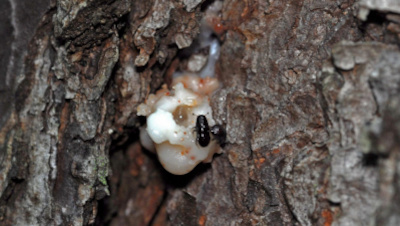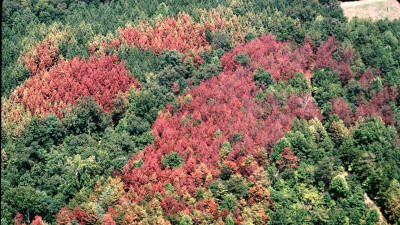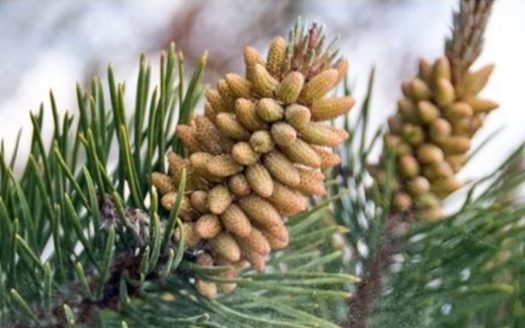The Pine Beetle Epidemic
It’s summer, it’s hot and it’s dry. Perfect conditions that allow pine bark beetles to thrive, and thrive they are doing. A pine bark beetle bores through the bark of pine trees and feed and breed in the cambium layer, just under the bark. This layer sends food and water to and from a tree’s roots and canopy. Sever enough of this layer and the tree dies.
A pine bark beetle bores through the bark of pine trees and feed and breed in the cambium layer, just under the bark. This layer sends food and water to and from a tree’s roots and canopy. Sever enough of this layer and the tree dies.
These bark beetles are always in the forest, and most of the time pine trees ward off these attacks by flushing out the intruders with sap (making the “popcorn” balls that you might have seen on the side of trees). But if a tree is under stress or has been injured, like from a drought, or a fire, or a storm, their defenses are down and the beetles can overwhelm a weaker tree, which then becomes a nursery for more beetles. If the healthier trees are also severely stressed or injured, with enough beetles gnawing at their bark, they too can become overwhelmed, and pretty soon it’s an epidemic.
Many places in north Alabama are experiencing an epidemic, caused by a perfect storm of four conditions:
- More and more volume in forests: We have an abundance of pine forests, which typically get planted and harvested and planted again on a regular basis (20 to 25 years). Imagine you are standing at our office in Tuscumbia at the center of a circle extending 75 miles out from where you stand. The pine forests inside that circle grow about 12 million tons of wood each year, and until about ten years ago, the forest industry (like sawmills and papermills) took about that same amount of wood out of the circle annually. That’s the ideal situation, when growth and harvest are roughly equal. Unfortunately, since 2013 when a large paper mill in Courtland was permanently closed, the amount of wood being harvested in that circle is now only about 6 million tons. That means every year the volume of wood in those forests increases by 6 million tons. Doesn’t sound so bad, right? But the forests are not spreading out; the trees are just getting bigger and competing with each other more and more for the same amount of water and nutrients. That’s stress.
- Older trees: Without plentiful markets trees have to wait longer for a harvest, and while they wait, they get older and less capable of fighting off the beetles. That’s stress.
- Harder to thin the forests: Thinning a pine forest means going into a pine stand and removing selected trees, thus reducing the competition between the trees, which reduces stress. A good thinning will concentrate on taking out the poorest, least healthy trees in the forest, leaving the healthiest trees which are also the ones most capable of warding off beetles. The small trees removed are sold as pulpwood (to be used to make paper or generate energy), but with fewer places to sell pulpwood, getting a stand thinned has become difficult. So not only are the trees competing more with other each year, the percentage of weak trees susceptible to pine beetle infestation increases more and more each year too. That’s stress.
- Then there’s the weather: In the summer of 2000, this area went through a three-month period with less than 1.5 inches of rain. That’s stress, and the pine beetles were extremely damaging in 2000 and 2001. In 2016 a late summer drought also caused some localized pine beetle problems, but last summer (2023) a late season drought in September and October (less than ½” of rain) really gave the beetles the upper hand.
In combination these stresses have created what we are experiencing right now. A very active and damaging pine beetle epidemic that rivals the ones experienced decades ago. It remains to be seen if it will exceed those proportions.


